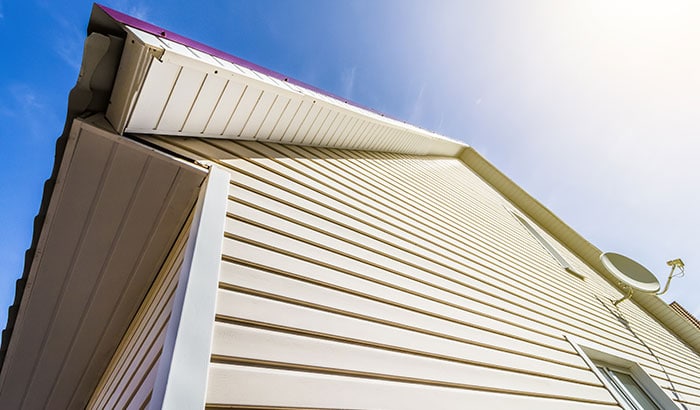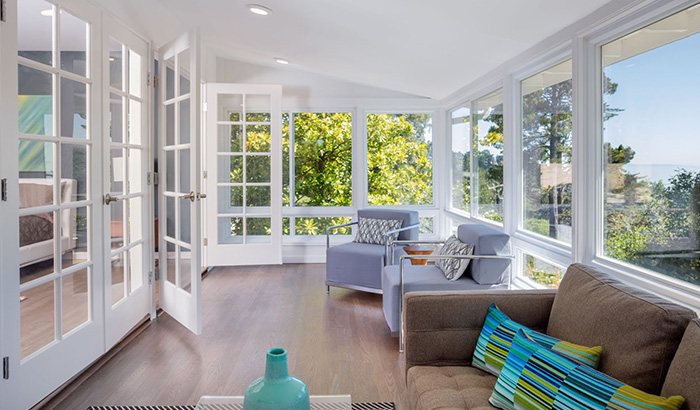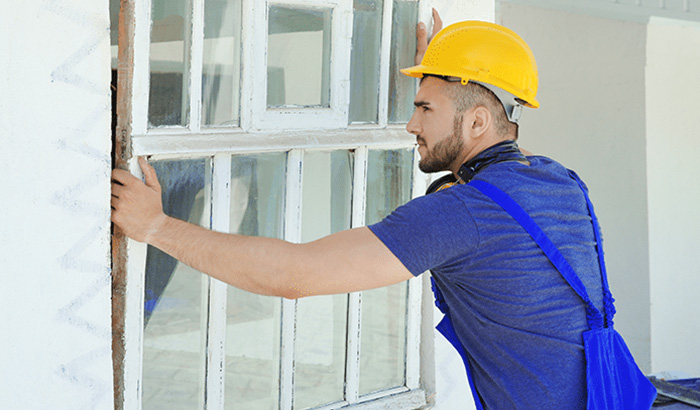What makes an energy efficient window that improves the comfort of your home, uses less fuel, and reduces your energy costs? There are four main features that set some windows apart from the rest: the frame, the construction, the glass, and the installation.
Window Frame and Construction
A window should have a sturdy frame of wood, aluminum, vinyl, or fiberglass. While wood was used in the past because it has good insulating value, this material is subject to rot. While many wood window frames endure in older homes, vinyl, fiberglass, and aluminum are often used in replacement windows due to their good value and energy efficiency. Some of these products are wood-clad to combine the look of wood with the ability of other materials to resist temperature and moisture transfer.
Whether a window is energy efficient depends on its construction. Most modern windows are double or triple pane, with argon or krypton gas in between. Sturdy frames support the glass and spacers needed to separate the panes that seal the window to prevent the gas from escaping and diminishing the insulating effect.
Glass in an Energy Efficient Window
The glass itself also makes the window energy efficient. Most glass now bears a sticker from the National Fenestration Rating Council (NFRC) that offers information about its efficiency that qualities it to be part of the voluntary Energy Star program. Windows must meet standards on these two main metrics:
U-value: Measures a window unit’s resistance to heat loss
Solar Heat Gain Coefficient (SHGC): Measures how much heat enters a home through the glass
Windows with low U-factors, which have a range of 0.20 to 1.20, are better insulators, while those with low SHGC (Solar Heat Gain Coefficient) block more heat of the sun. The Energy Department suggests the following values:
Climate Zone U-Factor SHGC
Northern ≤.0.30 ≤0.35-0.40
North Central ≤0.32 ≤0.40
South Central ≤0.35 ≤0.30
Southern ≤0.50 ≤0.27
For both U-factor and SHGC, the lower the number, the better the window should perform. However, in Northern climates, you should be most concerned with U-factor, while in the South, SHGC is the more important variable.
Other standards that factor into an energy efficient window include R values (heat resistance) and VT values (visibility). Some glass is coated to improve its thermal efficiency (insulation properties).
Proper Installation
While you need a sturdy window with Energy Star-compliant properties to ensure energy efficiency, you also need proper installation for best results. Since a window represents a break in your wall, it is crucial to properly seal the area around the window without using excessive amounts of sealants and expanding foam. The contractor should carefully flash and caulk around the windows to get the most energy efficiency out of them.
If you are interested in installing more energy efficient windows, contact the professionals at Mountain States Windows and Siding for a free estimate and more information on the best triple pane windows.





